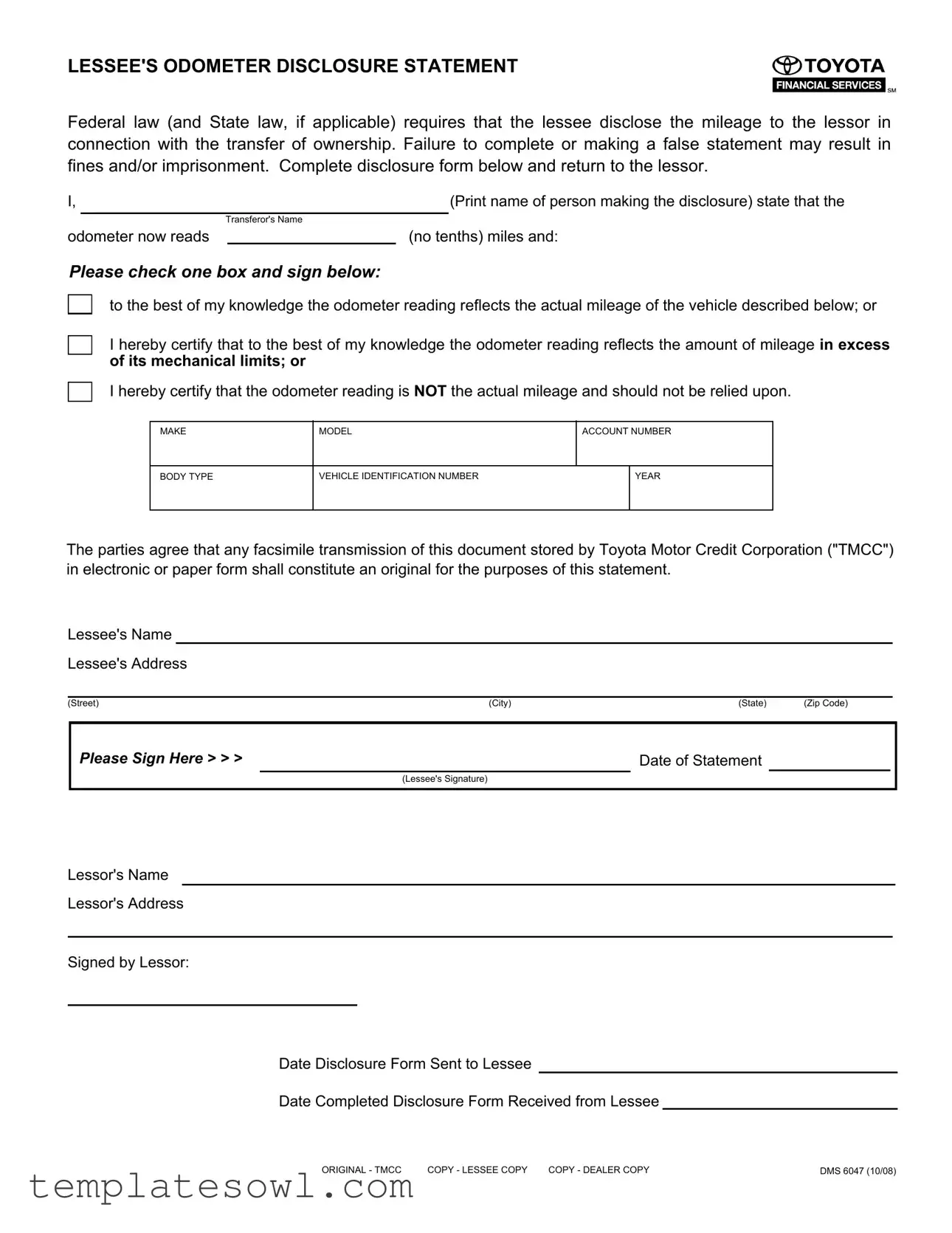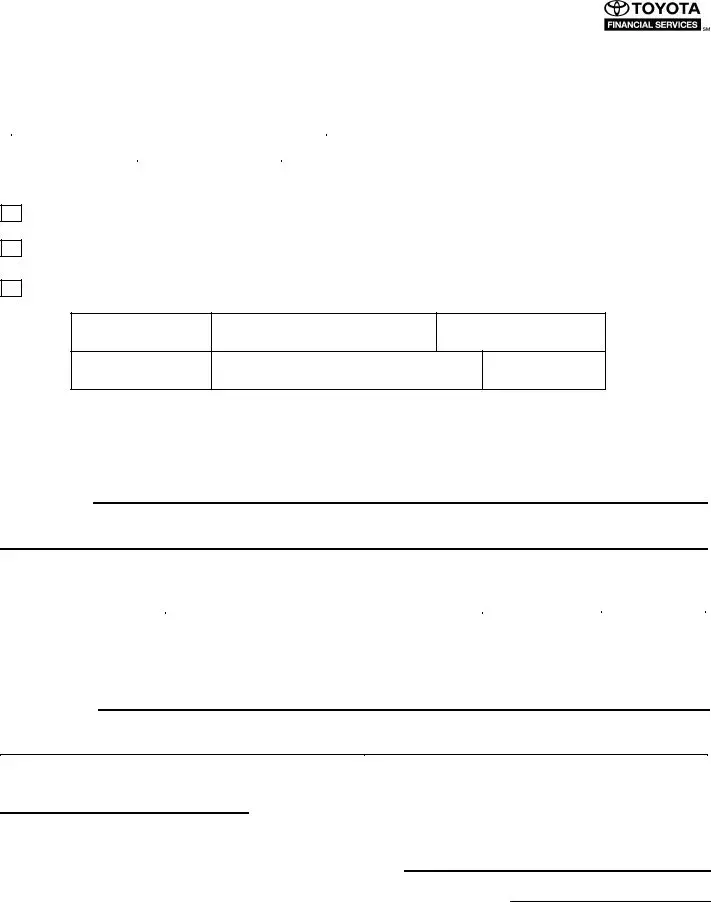What is an Odometer Statement form?
The Odometer Statement form is a legal document required by federal and state laws. It is used during the transfer of ownership of a vehicle, primarily leasing situations. The form requires the lessee to disclose the vehicle's mileage to the lessor. By filling out this statement, lessees help ensure transparency and honesty about the vehicle’s condition.
Why is it necessary to provide odometer readings?
Providing accurate odometer readings is crucial to prevent fraud in vehicle transactions. If a lessee does not disclose the correct mileage, they may face legal consequences, including fines or possible imprisonment. The law mandates that the lessee must reveal the current odometer reading and confirm whether it reflects the actual mileage, has exceeded mechanical limits, or is unreliable.
What happens if the Odometer Statement form is not completed correctly?
Failure to correctly complete the Odometer Statement form can lead to significant repercussions. If the lessee provides false information or fails to fill out the form, they may incur legal penalties. Both federal and state laws take these inaccuracies seriously, and violators may confront fines or other criminal charges.
Who should sign the Odometer Statement form?
The Odometer Statement form must be signed by the lessee, the individual making the mileage disclosure. The lessor, or the organization receiving the form, also signs it to acknowledge receipt. Both parties involved in the transaction need to ensure all information is complete and accurate before signing.
What should I include when filling out the Odometer Statement form?
When filling out the Odometer Statement form, the lessee must provide their name and address, the vehicle's make and model, the vehicle identification number (VIN), and the current odometer reading without tenths. Additionally, they must confirm the accuracy of this mileage by checking one of the provided boxes and signing the document. All details are essential for ensuring the paper trail reflects the true state of the vehicle’s mileage.

